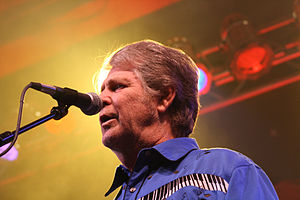Piano Sheets > Brian Wilson Sheet Music > Fun, Fun, Fun (ver. 1) Piano Sheet
Fun, Fun, Fun (ver. 1) by Brian Wilson - Piano Sheets and Free Sheet Music

About the Song
"Fun, Fun, Fun", written by Brian Wilson and Mike Love, was a hit single by The Beach Boys that was released in 1964 on the band's album Shut Down Volume 2.
The song was written by Brian Wilson and Mike Love about Shirley England, the daughter of the owner of radio station KNAK in Salt Lake City, Utah (not to be confused with the call letters now assigned to a station in Delta, Utah) where she worked as a teenager. She borrowed her father's Ford Thunderbird to go study at the library. Instead of driving to the library, she ended up at a hamburger stand. When her father found out he took the car away. The next day she was at the radio station complaining about it to the staff while The Beach Boys were visiting and they were inspired to write this song.[1]
The Wilsons' father, Murry, always the critical conservative, denounced the whole idea for the song as immoral, and tried to prevent the group.
Download this sheet!
About the Artist

Random article
Getting access to free sheet music for Christmas Christmas is one time when everyone wants to learn how to play the piano. There are so many Christmas carols, hymns and other compositions played. In such a situation, you will find it useful to get free sheet music especially with the Christmas compositions in them.
New age and classical
One of the best advantages about free sheet music is that you can get both classic as well as New Age Christmas musical notes. That means you will be able to play the old time classical compositions, carols etc. and the new artists compositions. The New Age Christmas musical notes are very poignant and lovely and playing these piano notes is sure to stir hearts. One of the drawbacks about New Age Christmas music sheets is that they are very difficult to access. Most New Age albums do not sell too well and hence the demand for these is lesser. In this context, getting access (More...)
